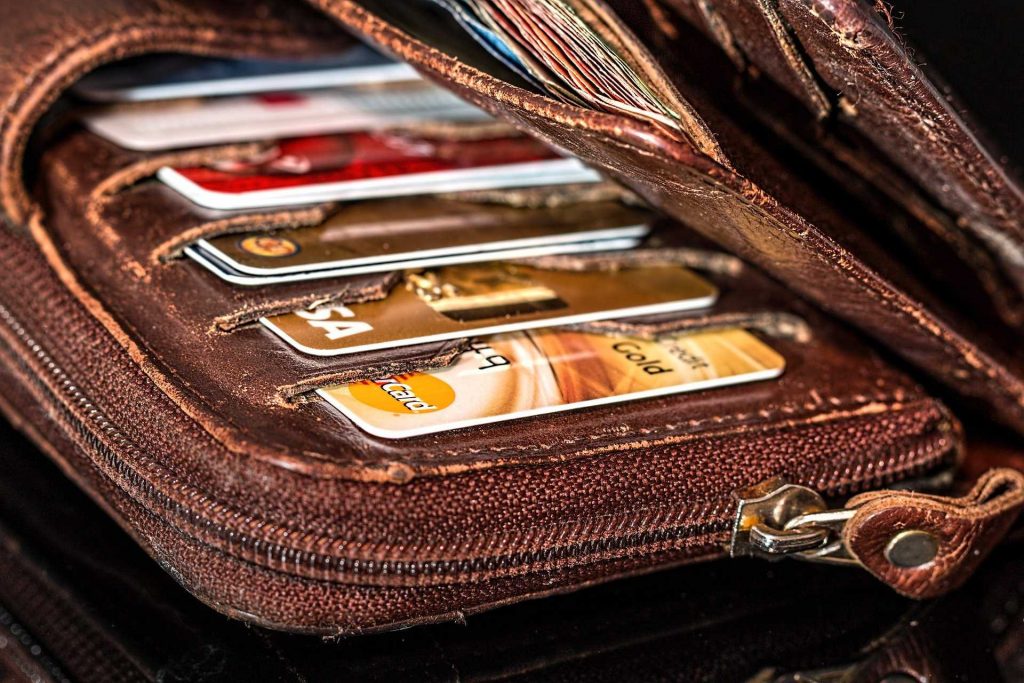
Are you struggling with credit card debt? If so, you’re not alone. As of 2022, the Federal Reserve Bank of New York and the U.S. Census Bureau estimates that each American household carries almost $8000 in credit card debt, on average.* Getting out of credit card debt may feel impossible when you have multiple credit cards to pay and we know that keeping track of due dates, minimum payments, and which credit card should be paid off first is a lot to handle. So in this guide, we’ll show you how paying off credit card debt can help you, and how to do it, even when it feels impossible.

Why Are You in Credit Card Debt?
The first step in paying off credit card debt requires you to look at your life honestly. Why did you end up in credit card debt? Ask yourself:
- Did you live outside your means?
- Do you have a shopping habit?
- Do you make charges without thinking about your budget?
When you know your ‘why’ you may have an easier time figuring out where to start. Knowing why you’re in debt may make it easier to change your habits and not only pay off your debt, but stay out of debt.
How Much Credit Card Debt Do You Have?
Once you’ve thought about why you’re in credit card debt, it’s time to tally everything up. This step is eye-opening but necessary. Otherwise, you won’t know which method is the best to pay off your credit card debt.
To tally up your credit card debt, you could do the following:
- Pull your credit card statements
- Organize your debt by APR (highest to lowest)
- Write down your debt by balance (lowest to highest)
- Write down the minimum payment for each credit card
This will show you where you stand, not only in terms of total debt but how it stacks up.
You’ll need at least each minimum payment, but to pay off your credit card debt, you’ll need to pay extra, using one of the methods below.

How to Pay off Credit Card Debt
Below are some examples of how to pay off credit card debt.
Start with the Smallest Debt
Think about how you work best. Do you thrive on motivation and small wins? If so, organize your debts by balance, from smallest to largest. Make note of the minimum payment required for each debt, and ignore the APR for now. Here’s how it works.
Try and make the minimum payment on each credit card. Any extra money you have to put toward debt payoff, you could pay on the first card in line (smallest balance). Keep doing this until you pay the first balance off in full.
Next, take the amount you paid to the first card and add it to the minimum payment of the second card in line (next largest debt). Keep doing this until you pay the debts off in full. At first, you may see quick results, but as you get into the credit cards with larger balances it may feel like it takes longer. What’s important is that you keep up with this process until all your credit card debt is paid off.
Start with the Card with the Highest APR
If you don’t need ‘quick wins’ and would rather focus on debts with the highest APR to save the most money, organize your debts from highest to lowest APR.
You’ll use the same strategy as above, but this time, you’ll pay the debt with the highest interest rate first. Keep in mind, you won’t get ‘quick wins’ with this method. Because you’re paying the debt with the highest interest rate, a large part of your payment will go to the interest first.
Keep up with your strategy, paying a consistent amount toward the first card until it’s paid off. Once paid off, take that amount and put it toward the next debt (the second-highest APR). Keep doing this until you’re out of debt.
The method behind this approach allows you to save more money on interest charges by knocking down the balance of the card with the highest APR first.
Use a Balance Transfer
If you’d rather consolidate your debt into one loan or credit card, you could use the balance transfer method. There are a couple ways to do this:
Balance Transfer Credit Card
If you have good credit, you may qualify for a 0% APR balance transfer credit card. Decide how much of your credit card debt you want to transfer over, and pay close attention to the balance transfer fee (usually a percentage of the debt).
Calculate how much you must pay each month to pay the full balance off before interest accrues again. Make the allotted payment fit in your budget and you’ll get by without paying any interest.
If you don’t qualify for a 0% APR credit card, ask your credit card company for a lower APR. If you have a solid payment history and didn’t abuse your credit line, they may lower your rate, making it easier to get out of credit card debt.

Debt Settlement Options
If you have a lump sum of money you can use to pay the debt down, you may be able to work out a settlement with your credit card company.
This should be a last resort since you’re asking for a special arrangement or the credit card company to accept less than the full amount. Your credit report will show that you settled the balance for less than the full amount, but as agreed. Keep in mind, this may hurt your chances at future credit.
If you do this step yourself, be prepared to have some back and forth with your creditors. They may not accept your offer right away, but with a little negotiation, it could be possible. When you reach an agreement, get it in writing.
If you can’t handle debt settlement yourself, you can hire a reputable debt settlement company to handle the negotiations for you. Before you agree to work with any company, get the terms in writing and make sure the agreement outlines the fees and what they’ll do for you.
Most debt settlement companies have professionals who can negotiate on your behalf, potentially getting you a better deal than you may be able to secure yourself. They know what creditors look for and want to hear and will act accordingly on your behalf.

Staying Out of Credit Card Debt
Now that you’ve mastered paying off credit card debt, it’s important you stay out of credit card debt. No matter which method you choose above, it’s important that you know how to stay out of credit card debt, because it doesn’t do you any good to pay your debt off only to get into it again.
Before you start a credit card debt payoff plan, figure out how you’ll live without credit cards using the following steps:
- Set up a budget and make sure you can stick to it. Create a budget that covers your needs, wants, savings, and debt payoff. Make sure it’s a budget you can stick to and won’t be too restrictive, otherwise you could end up using your credit cards again. If you need help getting started, check out our other blog on How to Build a Budget and Stick to It.
- Lock your credit cards up. Put them away, lock them up in a safe or give them to a trusted family member. This way they aren’t within your reach, which reduces the risk of you using them.
- Live within your means. It’s easy to think of credit cards as a way to buy things you want but can’t pay for right now, but that mentality may be what got you into this position in the first place. Instead, live within your means and avoid impulse buys. If there’s something you want and can’t afford, budget for it and buy it only when you can pay cash.
Paying off Credit Card Debt is Empowering

Paying off credit card debt requires discipline and commitment, but it’s possible with the right strategies in place. By assessing your debt, creating a budget, prioritizing your payments, and setting realistic goals, you can take control of your finances and become debt-free.
Paying off your credit card debt is a freeing feeling. Say goodbye to the heavy burden on your shoulders as you try to pay for purchases you made months or even years ago. You’ll be able to focus on your debts and budgeting needs today, without making up for past mistakes.
High-interest loans can be expensive and should be used only for short-term financial needs, not long-term solutions. Customers with credit difficulties should seek credit counseling. The opinions expressed above are solely the author’s views and may or may not reflect the opinions and beliefs of the website or its affiliates. Cash Factory USA does not provide financial advice.
* This blog contains links to other third-party websites that are not endorsed by, directly affiliated with, or sponsored by Cash Factory USA. Such links are only for the convenience of the reader, user, or browser.